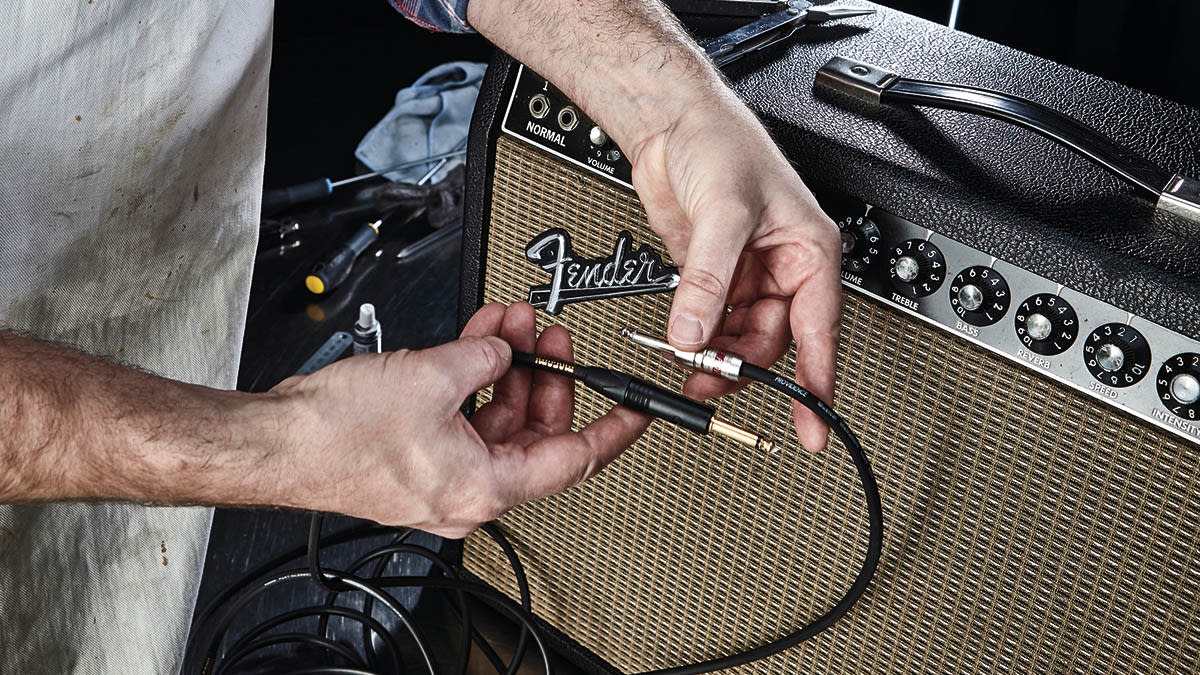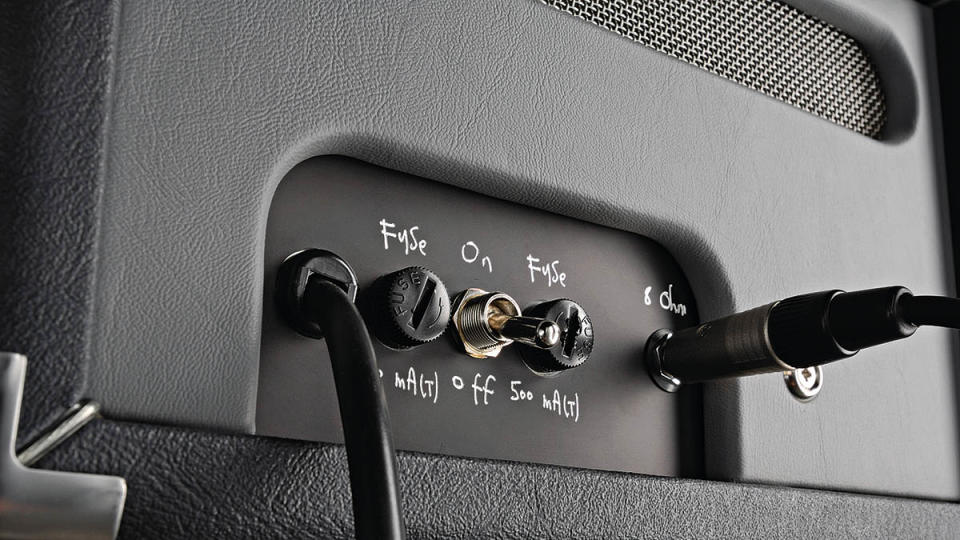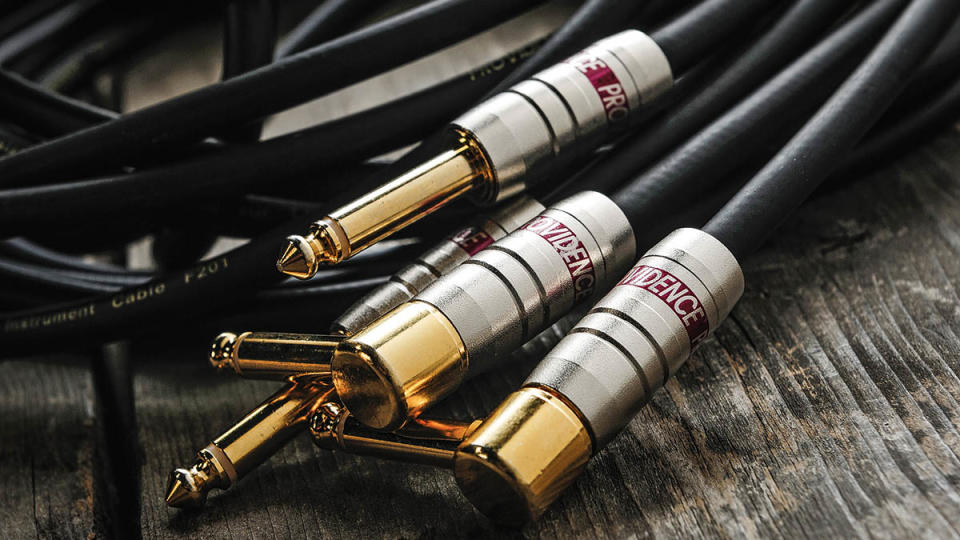Guitar cables vs speaker cables: what’s the difference?

Cable manufacturers often take their lead from the hi-fi industry when it comes to marketing. Terms such as oxygen-free, skin effect, directionality and dielectric biasing are bandied about and, while there may be a scientific basis for some of these claims, the idea is to make customers think there’s always something better out there.
Not all cables are created equal, but factors that affect their sonic characteristics can usually be measured and quantified. As musicians, we are primarily concerned with instrument and speaker cables. So, what’s the difference?
Speaker cable
Cables used to connect amplifiers to speakers are very different from the cables used to connect instruments to amplifiers or pedals to pedals. Speaker cable is by far the simplest, and the two key requirements are adequate power handling and low resistance. The object is to transfer all the amp’s power to the speaker without wasting any as heat.
Hi-fi enthusiasts make all sorts of claims about speaker cable, and if you’re listening to a halfway decent system, you will almost certainly hear a difference if you change from cheap bell wire to just about any commercial speaker cable. Perhaps you’ll notice extra clarity, tighter bass or crisper stereo imaging. Or maybe you won’t.

Either way, guitar amplifiers and speakers are not high-fidelity devices and the amp’s circuitry and the speaker together limit high- and low-frequency response. They also operate in mono, so stereo imaging isn’t a consideration. Also bear in mind that hi-fi speakers may be several metres away from the amplifier, but for guitar purposes the cable length (and resistance) will be far shorter.
Consider the type of speaker wire used in vintage amplifiers. Vox used something akin to bell wire and 1960s Fenders had the same cloth-covered wire they used to hook up the amplifier circuitry. In Tweeds, you often find the same brown plastic insulated wire that was used for the two-prong mains plugs.
If fancy speaker wire makes such a noticeable difference over a 12-inch run, why hasn’t it become commonplace to retrofit vintage amps with more expensive speaker cable? And why isn’t there a raft of guitar speaker cable shoot-out demos on YouTube? The answer is that any differences, if they even exist, are so miniscule that most of us can’t hear them.
Granted, you’ll sometimes see fancier speaker cable in boutique guitar combos, but we suspect that has more to do with marketing psychology than audio performance. Speaker cable is usually sold by the metre, so it doesn’t cost much to experiment. Try comparing some with regular stranded copper wire from a mains cable while you’re at it. Just saying…
If you’re in doubt as to whether a cable is intended for speakers or instruments, don’t use it for speakers
For single speakers you’ll need two lengths of wire: one for the positive and one for the negative. If you’re hooking up multiple speakers in parallel, take care to connect positive to positive and negative to negative to keep them all in phase.
At one end, the wires have to be soldered to a jack plug to connect to the amplifier, and using super chunky hi-fi-style wire will make that very difficult. For separate cabs, a jack plug is required at both ends, but in combos the speaker ends will need to be soldered to spade connectors or directly onto the speaker tags. The latter is preferable for reliability.
Speaker wires usually run parallel to one another, or they may be twisted together. The wires may also be enclosed within a layer of plastic insulation, which can make speaker and instrument cables appear identical. If you’re in doubt as to whether a cable is intended for speakers or instruments, don’t use it for speakers. We’ll explain why later.
Instrument cable
Instrument cable is coaxial, which means there’s an insulated signal carrying centre wire enclosed within an outer layer of braided wire. It’s very similar to the braided pickup leads and hookup wires used in vintage Gibson guitars, but instrument cable also has insulation protecting the braided layer.
The braided layer is used to shield the signal wire from noise sources such as computer monitors, radio transmissions, fluorescent light interference and mains hum. The idea is to optimise signal-to-noise ratio; the positive signal wire is soldered to the tip connector of a jack plug and the negative braided wire is connected to the sleeve.
Even though it’s shielded, coaxial instrument cable can still be susceptible to noise, and the longer a cable is, the greater potential it has for picking up noise. Static charge can also build up when the braided layer rubs against the insulation and results in crackling noises when the cable is moved or handled.

To prevent this, any high-quality instrument cable should have an electrostatic shield that kills the crackle by discharging static to ground. If you’re allowed to audition a cable in a shop, plug it into an amp and try bending it by hand and slapping it on the floor to check if it’s noisy. If it is, don’t buy it because the problem will become worse.
In electrical terms, the signal level generated by a passive pickup is tiny, so the signal carrying wire in an instrument cable doesn’t need to be that substantial. In comparison, the output level generated by a guitar amplifier is huge and speaker wires must be able to handle the power.
If you inadvertently use an instrument cable to connect your amp and speaker, the conductor may heat up and present the amp with a higher impedance. More powerful amps may even cause the plastic insulation to melt, and if the wires short out, damage to the amplifier can be considerable.
Misdirection
Some high-end instrument cables are described as ‘directional’, but that doesn’t mean the electrons only flow in one direction. Instead, one end should always connect to the guitar and the other to the amp. Directional cables are made with dual-conductor microphone cable, rather than single-core coax cable.
Let’s say the conductors are coloured black and white. At the amp end, the white connects to the jack’s tip and the black wire is twisted together with the shield and soldered to the jack’s sleeve, aka ground. At the guitar end, only the white and black wires are connected to the jack and the shield is cut away so it ‘floats’.
‘Oriented’ may be a more accurate term than directional, and some claim these cables are great for tone and provide superior noise rejection. Pete Cornish cables are supposedly made this way and are very highly regarded. Directional cables are sometimes described as ‘semi-balanced’, which is really just a meaningless marketing term.
Wiry tone
Instrument cable can have a strong influence on guitar tone and the primary cause is cable capacitance. If you place two electrical conductors in close proximity and separate them with a non-conductive material, you have the makings of a capacitor.
Considering the way that instrument cables are constructed, with an insulating layer separating the signal wire and braid, a coaxial cable is essentially a tubular capacitor. Using any instrument cable is tantamount to placing a capacitor between the hot connection of your pickup and ground and that results in treble roll-off.
Instrument cable capacitance is typically rated between 50pF and 150pF per metre, which equates to the bright capacitor values used in some amplifiers. Cable capacitance is proportional to length, so four metres of 50pF per metre cable will be closer to 200pF.
As capacitance increases, the treble roll-off encroaches further down into the guitar’s frequency response. Consequently, longer cables will make your guitar tone darker. But is that necessarily a bad thing?
In hi-fi terms, the ‘perfect’ cable would transfer 100 per cent of the signal without any change in frequency response and no added noise. In other words, sonic transparency. As we mentioned earlier, guitars and amps are not hi-fi devices and some players prefer to use longer cables, but the reason isn’t entirely attributable to treble roll-off.
Pickups, potentiometers, tone capacitors and cables combine to make guitar circuits resistive, inductive and capacitive. Rather than a simple loss of treble above a certain frequency, the result is a resonance peak around that roll-off frequency. The frequency range at which the peak occurs, combined with the width and intensity of the peak, has a big impact on the resulting guitar tone.
Guitar electronics expert Bill Lawrence noted that using a 300pF cable with a Stratocaster results in a 6kHz resonance peak and sparkling highs. The curly cables that Jimi Hendrix liked to use measured closer to 2400pF, which subsequently shifts the resonance frequency closer to 2kHz. Bump the volume up a bit and that gives you a midrange boost.
Most modern high-end instrument cable is designed for low capacitance and unrestricted treble response, which we hear as clarity and detail. If that’s your preference, check out the manufacturer’s specs and buy low capacitance cable. On the other hand, when you’re shooting for specific vintage tones, then low capacitance cable may undermine your efforts.
Naturally bright guitars may sound better to you with higher capacitance cable. Conversely, low-capacitance cable may improve the clarity and definition of guitars with darker-sounding humbuckers
Want to experiment? Try soldering a bunch of capacitors onto a rotary switch, connect it across the positive and negative tags of your output socket and listen to the tone changing. Or consider soldering a Neutrik NP2RX-Timbre plug at one end.
Naturally bright guitars may sound better to you with higher capacitance cable. Conversely, low-capacitance cable may improve the clarity and definition of guitars with darker-sounding humbuckers.
Try using a capacitive cable to refine overdrive and distortion tones, and low capacitance when you need sparkle and chime. Don’t focus exclusively on the treble response because the midrange tone is arguably more important. As ever, it’s really about mixing and matching gear to achieve specific results and choosing the right cable for the job is something else you can factor in.

